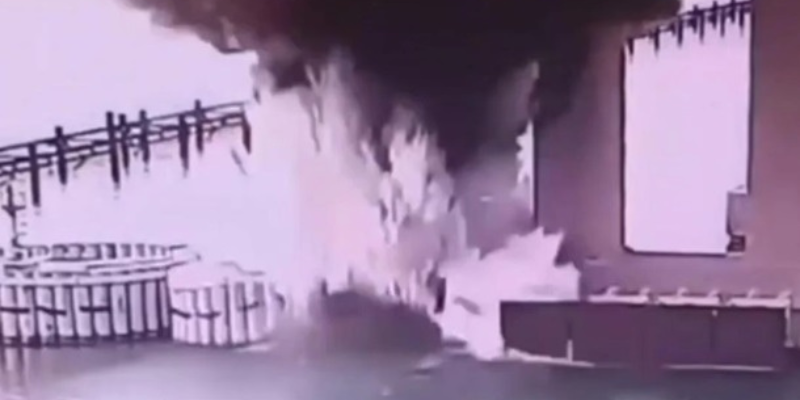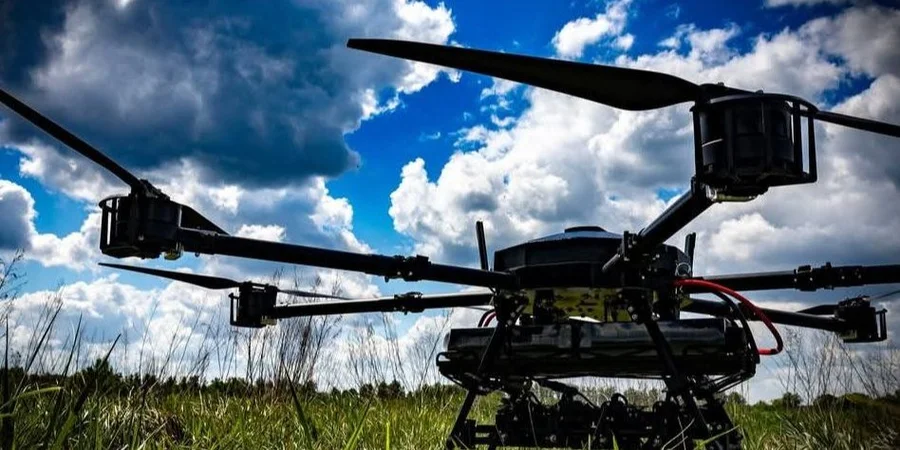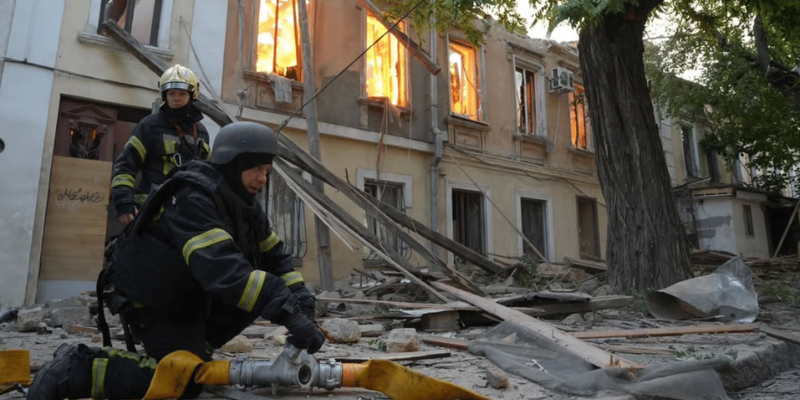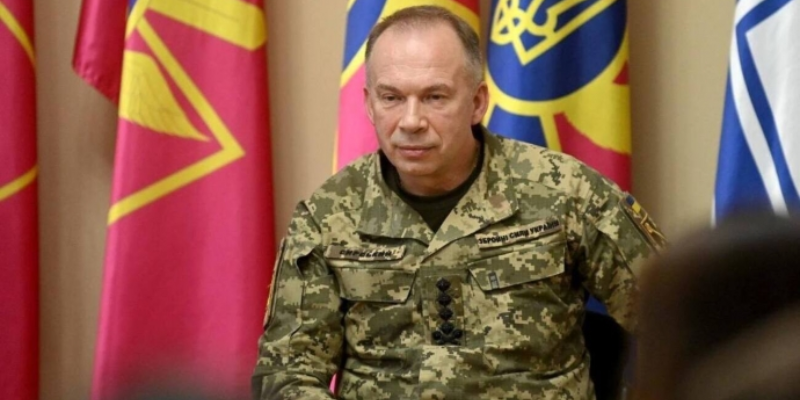Ukraine’s security service damages Crimean Bridge for third time—this time from beneath the water

Ukraine’s Security Service (SBU) carried out a covert underwater strike on the illegally built Crimean Bridge that links mainland Russia with the occupied Crimean Peninsula in the early hours of June 3, delivering what officials described as significant structural damage to a key Russian military logistical supply route.
According to SBU chief Vasyl Maliuk, the special operation—which had been months in the making—involved placing and detonating underwater explosives directly beneath the bridge’s foundational support pillars.
The charge, equivalent to 1,100 kilograms of TNT, was detonated at 4:44 a.m., damaging structural elements near the seafloor and leaving the bridge in what officials called “critical condition.”
“There are no civilian casualties,” the SBU said, emphasizing that the operation was meticulously planned to minimize risk to noncombatants. Lt. Gen. Maliuk personally oversaw the planning and execution of the mission.
“God loves a trinity,” Maliuk remarked. “The SBU always finishes what it starts and never repeats itself. We’ve hit the Crimean Bridge twice before—in 2022 and 2023. Today, we continued that tradition—from below.”
Russia has used the bridge to move troops, fuel, and ammunition to its forces in southern Ukraine.
Ukrainian officials have long labeled the bridge a legitimate military target, arguing that its destruction hinders Russia’s ability to sustain its occupation. “Crimea is Ukraine,” Maliuk said, “and any symbols of occupation will receive our firm response.”
SOURCESymbolic number of the Day
Ukraine needs 200 jets for effective defense – Air Force. Ukraine requires around 200 modern fighter and multi-use jets of various types to effectively defend against Russian aggression, Air Force spokesperson Col. Yurii Ihnat said in a June 3 interview. While the F-16 is a versatile multirole jet, Ihnat noted that different missions call for different platforms.
Back in the 1990s, Ukraine inherited nearly 1,000 aircraft from the Soviet Union, but many were later scrapped or sold off. Today, quality and modernization outweigh sheer numbers. “It’s not about how many—we need innovation and upgrades to win,” Ihnat stressed.
SOURCEWar in Pictures
Russian rocket strike hits downtown Sumy, killing 3 civilians and wounding 25. Russian forces launched a long-range rocket attack on the center of the northeastern Ukrainian city of Sumy on June 3, killing three civilians and injuring at least 25 others, including three children.
Several victims are in critical condition, according to regional and local authorities. The attack, which struck a busy part of the city, ignited fires, destroyed vehicles, and damaged civilian infrastructure including homes, a hospital building, and a warehouse. Emergency crews are still surveying the affected areas.
Initial reports indicate that a multiple-launch rocket system was used in the strike. One of the rockets struck a city street, setting a vehicle ablaze. Another damaged a five-story apartment building and several private homes, though without widespread collapse or fire.
Among the wounded are residents who were caught in or near their vehicles at the time of impact. Officials said there were at least five separate impacts across three neighborhoods. A medical triage center has been set up, and rescue teams, police, and volunteers are working to clear debris and assist survivors. Local authorities have declared June 3 and 4 days of mourning in Sumy.
“This was not a military target,” said acting mayor Artem Kobzar. “It was the center of our city—full of civilians starting their day.”
SOURCEVideo of the Day
Russian drone strike ignites fires in Odesa, injures five civilians. A Russian drone attack on the southern Ukrainian city of Odesa early on June 3 sparked multiple fires, injured five people, and damaged homes, warehouses, and civilian infrastructure, according to local authorities.
The Odesa Black Sea Security Forum was taking place in the portside city at the time of the aerial attack.
The strike, carried out overnight using Iranian-designed Shahed drones, hit both residential and commercial areas. Footage released by emergency responders shows flames engulfing a food storage facility and charred remains of cars in nearby neighborhoods. Two vehicles were completely destroyed.
SOURCEInstitute for the Study of War (ISW) report

Key Takeaways:
- Ukrainian and Russian delegations met in Istanbul on June 2 and only reached agreements about prisoner of war (POW) exchanges. Russia’s refusal to give Ukraine its memorandum with its terms for a peace settlement before the meeting ensured that the meeting was largely unproductive and further protracted the negotiation process.
- Ukrainian and Russian media published the major points of both sides’ memorandums on June 1 and 2, respectively.
- Russia’s memorandum reflects the Kremlin’s long-standing public demands for Ukraine to make significant territorial and political concessions while Russia offers no concessions of its own.
- The Russian delegation dismissed Russia’s systemic kidnapping of Ukrainian children.
- Russian forces appear to be intensifying efforts to widen the frontline in northern Sumy Oblast along three axes of advance north and northeast of Sumy City.
- Open-source analysts continue to clarify the battlefield damage following the Ukrainian long-range drone strike series on June 1.
- Ukrainian forces recently advanced near Velyka Novosilka. Russian forces recently advanced near Lyman, Chasiv Yar, and Toretsk.
War heroes
In memoriam: Ukrainian soldier Oleksandr Tatsenko, call sign “Joker,” killed in action in Russia’s Kursk region
Pvt. Oleksandr Tatsenko, 22, was killed on Oct. 15, 2024, during a combat mission near the city of Sudzha in Russia’s Kursk region. He died from fatal injuries sustained after triggering a land mine. Tatsenko was born in the village of Boromlia in Ukraine’s Sumy region and lived in the regional capital. He graduated from the Sumy College of Construction with a degree in civil engineering, though he never worked in his field. He was passionate about cars and sports.
After the full-scale Russian invasion began, Tatsenko volunteered to defend his country. He was mobilized by the Khmelnytskyi recruitment center in summer 2022 and initially served in border defense units near Sumy. In April 2024, he joined the 4th Special Operations Forces Regiment, known as the “Rangers,” where he served as a rifleman.
For his service, he was awarded the “For Service and Valor,” 3rd class. “Sasha was the best husband — caring and loving,” said his wife, Inna. “It’s a huge loss for me, for our family, his friends, and comrades. He was sincere, kind, always smiling. Brave, hardworking, and incredibly responsible. He was the heart of any gathering and the first to offer help. There are very few like him.
He had so many plans — to start a business, raise children, travel the world, and live a happy life after the war. Accepting this loss is impossible. He is now my guardian angel. He will forever live in my heart and memory.” Tatsenko was buried in his native village of Boromlia. He is survived by his mother, wife, extended family, friends, and fellow soldiers.
*Tatsenko’s story on the Heroes Memorial – a platform for stories about the fallen defenders of Ukraine.
SOURCELatest news
- UK wants to force Russian oligarch Abramovich to transfer funds from sale of Chelsea to Ukraine through court
- Medvedev: Istanbul talks not aimed at peace but at Russia’s “complete victory”
- Ukrainian suspected of arson linked to Starmer was likely recruited by Russia via Telegram
- Russia has lost over 990,000 soldiers since February 2022
- UK invests 2.7 billion dollars in drones, drawing on lessons from war in Ukraine







